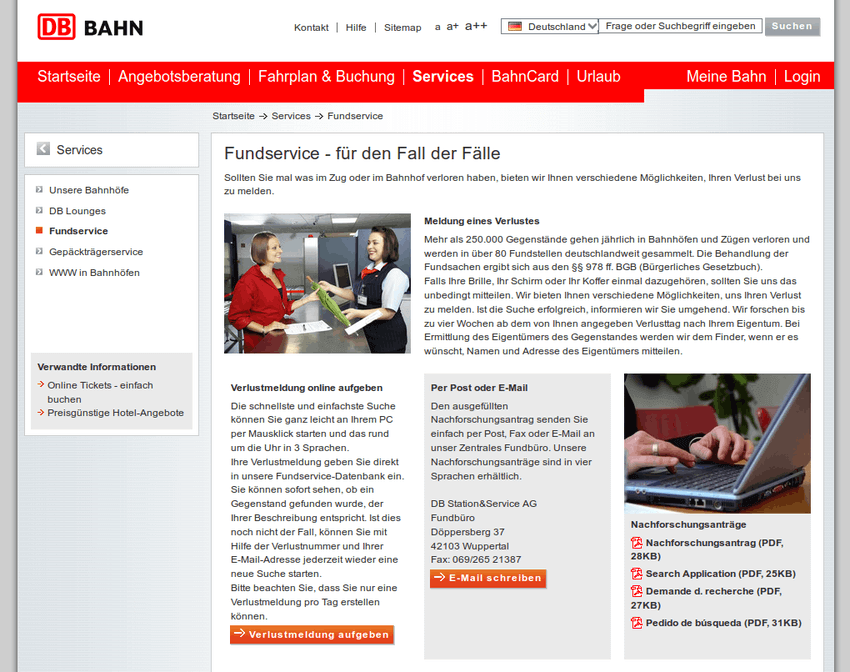For their successful, good life Information you really need: Government-funded publisher, awarded the Global Business Award as Publisher of the Year: Books, Shops, eCourses, data-driven AI-Services. Print and online publications as well as the latest technology go hand in hand - with over 20 years of experience, partners like this Federal Ministry of Education, customers like Samsung, DELL, Telekom or universities. behind it Simone Janson, German Top 10 blogger, referenced in ARD, FAZ, ZEIT, WELT, Wikipedia.
Disclosure & Copyright: Images created as part of a free collaboration with Shutterstock. Text originally from: "The Career Driver's License: Success Tips for Everyone Who Starts Working" (2011), published by Campus Verlag, reprinted with the kind permission of the publisher.
Procrastinating Postponement Time Management [3 Reasons]
From Professor Dr. Martin-Niels Däfler (More) • Last updated on October 03.03.2024, XNUMX • First published on 07.07.2017/XNUMX/XNUMX • So far 4823 readers, 1738 social media shares Likes & Reviews (5 / 5) • Read & write comments
Tax returns, reinstalling your operating system, cleaning the house - these are all things we like to put off before us - until the mountain gets bigger and bigger. 3 good reasons against procastinating. And 3 tips for quick decisions and implementation. Because then the procastination also becomes the correct one procrastination;-)

Postponed or not?
Imagine a really unpleasant task: the travel expense report draw up, writing the minutes of the last project meeting or reading the 17-page status report on the SAP implementation. And now the crucial question: postpone or not?
No matter what horror you were thinking, what do you think is better:
- a) To get things done quickly and to do them in one go
- b) to schedule a few small breaks?
Jobs you love ...
The books on the subject (advertising)
And now, let's think of an opposite situation, an activity that you really like. Again, it does not matter what that is.
If you're a numbers person, you might enjoy analyzing Excel spreadsheets. If you're more of the creative type, then you might have Fun to create slides.
Procastination or procrastination?
Anyway, what you think is more meaningful:
- c) To do the pleasant task without rest or
- d) deliberately doing something else?
In fact, the correct name is Prokrastinieren - from Latin cras - the morning. However, many readers also use the wrong name, so we want to accommodate you with the alternative spelling a little.
Why procrastinating is wrong: 3 reasons
Discounts for your success (advertising)!
But back to the real thing Problem: If you like most People knitted, then you answered b) to the first question and c) to the second. However, this is the wrong one Strategy! At least, according to research by Leif D. Nelson of the University of California and Tom Meyvis of New York University.
Nelson and Meyvis have found in their experiments that people suffer less if they do not interrupt an unpleasant experience. And they are more pleased with a pleasant experience when they intervene by a break.
1. Just do not take a break
Nelson and Meyvis tested their thesis on negative experiences, among other things: vacuum cleaner noise, the Hand diving in cold water, visiting the dentist or standing in line. Positive experiences included flying first class, listening to music or eating ice cream.
The Quintessence of the scientists: If you take a break during an annoying task, then it is much harder to start again. And turned around is true: If you briefly break pleasurable, you enjoy the beautiful afterwards more intense.
2. Hedonistic adaptation
Nelson and Meyvis explain this phenomenon with hedonistic adaptation. In plain English: We fit in quite well fast adapt to a new situation and get used to it.
The first five minutes in the warm bathtub are still a highlight, the next five also quite nice, but quite soon we have got used to the comfortable feeling. If you just get out of the tub to get a cool beer, you will enjoy the re-immersion in the bubble bath more than someone who stays in it.
3. Avoid unpleasant better
The same applies to stupid people Tasks: If you interrupt them, you enjoy the (short) moment, but you have to overcome yourself again when it comes to the second part of the hated job.
So: Do unpleasant tasks in one go, instead of interrupting them (several times), and try to extend beautiful things by deliberate pauses!
3 tips for quick decision-making
And then it's down to business: making decisions. If you care for one thing decide, you're usually spoiled for Choiceto choose the best. But which one is the best to solve your specific problem? I have three more for you Methods compiled for quick decisions.
Decision-making aid 1: Prone decision
Actually, there are no rational decisions. Neurological and psychological research results show that people first make their decisions subconsciously, above all emotionally directed, meet and later rationalize.
So it wouldn't have any Sinn, trying to make a purely rational decision. The – seriously meant – SuggestionsJust trust your gut feeling. Especially for smaller problems it is often practical to simply use your own emotions to trust.
Decision support 2: CAF method
In the case of more far-reaching problems, one can no longer and should not rely solely on one's feelings. The CAF method (“Consider all facts”) helps here, in which as many influencing variables as possible for a decision be used. The principle is banal: You list all the points that have something to do with your problem, such as:
- the cost or the price / performance ratio,
- the time required,
- the effect on customers or
- the acceptance by employees.
Which alternative is best suited?
You can then use this list to determine which of the alternative alternatives is best suited. The advantage of this method is that all decision-making factors can be seen at a glance, due to the written form.
Of course, when creating your list of criteria, one factor should never be missing: feasibility. Because what good is the best Idea, if it can only be implemented with difficulty or with great effort?
Decision-making support 3: Decision-making matrix
While the first two decision aids are comparatively quick to apply, the method of the decision matrix requires a little more effort. To do this, first compile all the criteria that are relevant to your decision - so use the CAF method.
It is important that you use the individual factors positively forms, so the following must apply to each criterion: the more of them, the better. Now use the criteria to evaluate each of the alternative solutions you developed in step four.
Use a scale from 1 (very bad) to 10 (best). Then all you have to do is add up the point values and you get the best one Solution.
Top books on the subject
Read text as PDF
Acquire this text as a PDF (only for own use without passing it on according to Terms and conditions): Please send us one after purchase eMail with the desired title supportberufebilder.de, we will then send the PDF to you immediately. You can also purchase text series.
4,99€Buy
Advice on success, goal achievement or marketing
You have Ask round to Career, Recruiting, personal development or increasing reach? Our AI consultant will help you for 5 euros a month – free for book buyers. We offer special ones for other topics IT services
5,00€ / per month Book
Book eCourse on Demand
Up to 30 lessons with 4 learning tasks each + final lesson as a PDF download. Please send us one after purchase eMail with the desired title supportberufebilder.de. Alternatively, we would be happy to put your course together for you or offer you a personal, regular one eMail-Course - all further information!
29,99€Buy
Skate eBook as desired
If our store doesn't offer you your desired topic: We will be happy to put together a book according to your wishes and deliver it in a format of your choice. Please sign us after purchase supportberufebilder.de
79,99€Buy
Here writes for you
 Prof. Dr. Martin-Niels Däfler teaches at the University of Economics and Management (FOM) in Frankfurt am Main. Dafler, born in 1969, studied business administration and has been working as an independent communications and marketing consultant and trainer ever since - his clients include both large and medium-sized companies as well as numerous associations and academies. Since the beginning of 2010 he has been a lecturer at the University of Economics and Management (FOM) in Frankfurt am Main. His publications include “The career driver's license - tips for success for everyone who starts working”. All texts from Professor Dr. Martin-Niels Däfler.
Prof. Dr. Martin-Niels Däfler teaches at the University of Economics and Management (FOM) in Frankfurt am Main. Dafler, born in 1969, studied business administration and has been working as an independent communications and marketing consultant and trainer ever since - his clients include both large and medium-sized companies as well as numerous associations and academies. Since the beginning of 2010 he has been a lecturer at the University of Economics and Management (FOM) in Frankfurt am Main. His publications include “The career driver's license - tips for success for everyone who starts working”. All texts from Professor Dr. Martin-Niels Däfler.
6 responses to “Procrastination procrastination time management [3 reasons]”
-
3 Reasons Against Procastinating: How To Overcome Slip Onitis by Prof. Dr. Martin-Niels Däfler ... - Recommended contribution rwiLoVQcPW
-
3 Reasons Against Prokastinieren: How To Override Aufschieberitis From
Prof. Dr. Martin-Niels ... via @berufebilder - Recommended contribution 9RfSsim00e -
3 Reasons Against Prokastinieren: How To Override Aufschieberitis From
Prof. Dr. Martin-Niels ... via @berufebilder - Recommended contribution WWGOMdN0eF -
RT @jobcollege: Procrastination of unpleasant tasks: Just don't procrastinate: Imagine a real… # B…
-
Procrastination of unpleasant tasks: Just don't procrastinate: Imagine a real… #profession #education
-
[…] Procrastination of unpleasant tasks: Just don't procrastinate […]



















Post a Comment